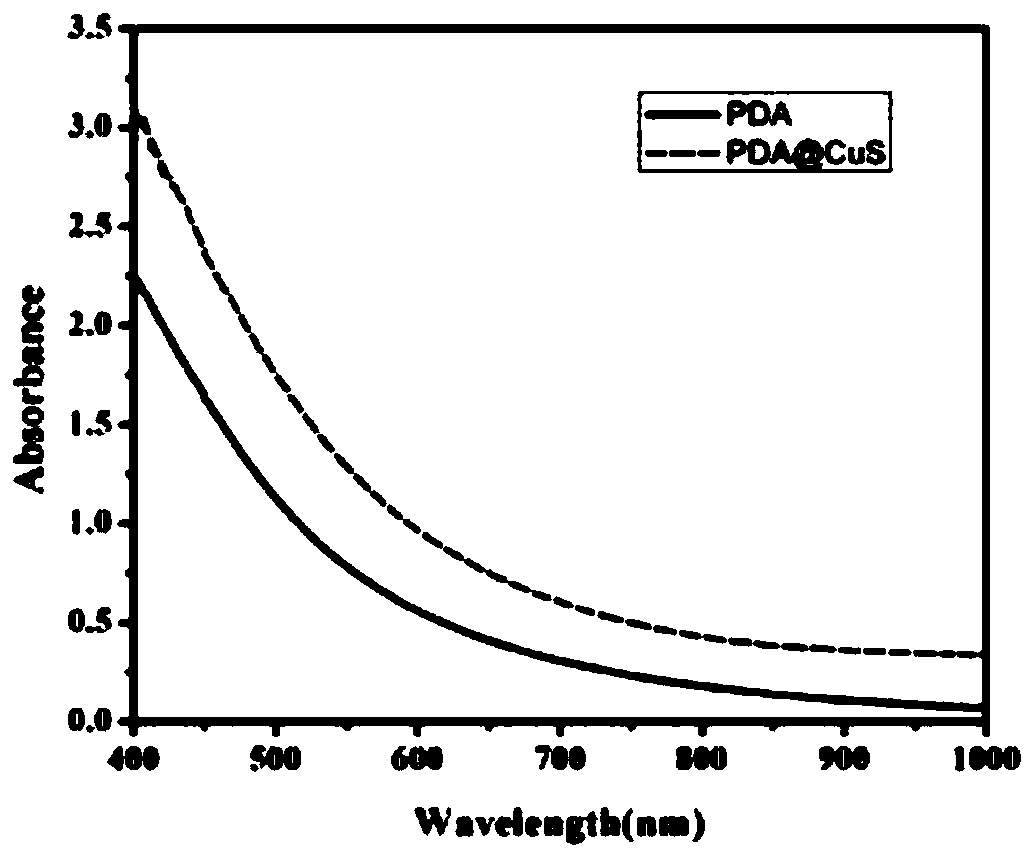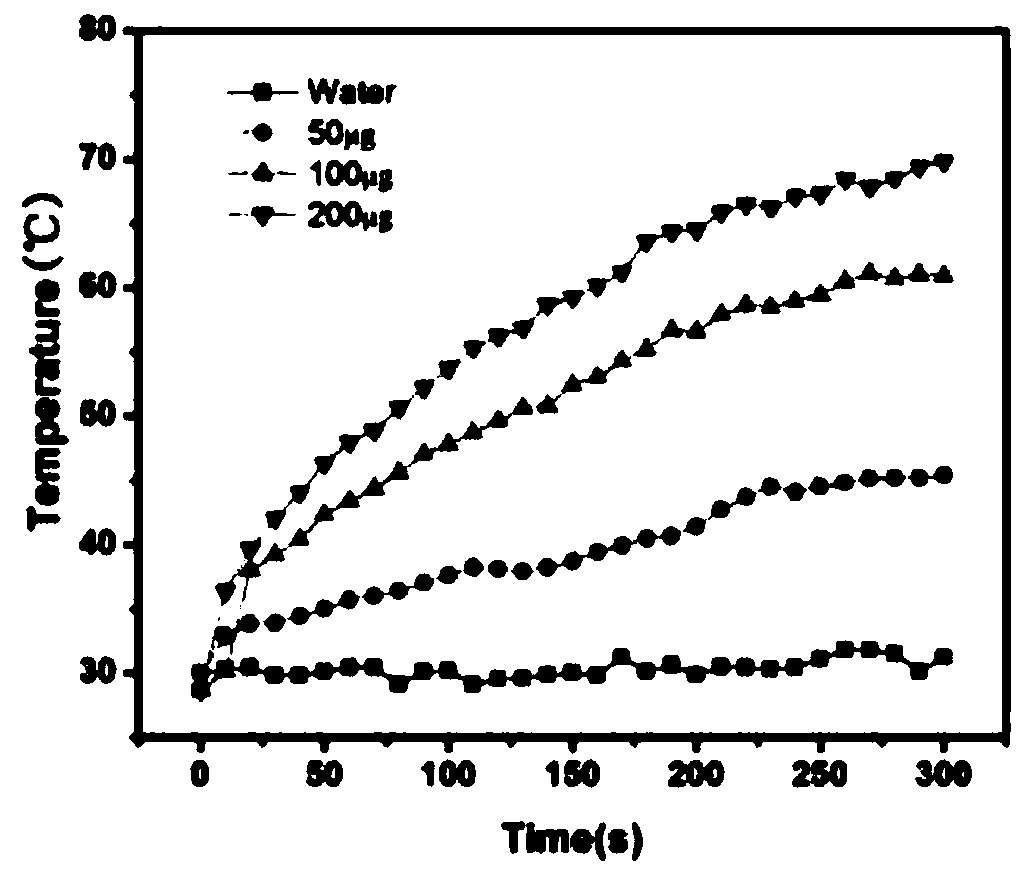A kind of preparation method of composite photothermal agent with photothermal effect
A photothermal effect and composite light technology, applied in the fields of material science and biomedicine, can solve problems such as hindering biological applications and weak photothermal absorption intensity, achieve good biocompatibility, improve photothermal effect, and experiment repeatability high effect
- Summary
- Abstract
- Description
- Claims
- Application Information
AI Technical Summary
Problems solved by technology
Method used
Image
Examples
Embodiment 1
[0022] (1) Preparation of polydopamine nanoparticles: Measure 18ml of deionized water and 8ml of ethanol in a 100ml single-mouth bottle, quickly add 0.6ml of concentrated ammonia water (mass fraction is about 25%) under weak magnetic stirring conditions, Stir for 30 minutes, weigh 0.1 g of dopamine hydrochloride, dissolve it in 2 ml of deionized water, and add it to the solution system. React at 30°C for 24h.
[0023] After the reaction was completed, a dialysis bag with a molecular weight cut-off of 14000D was selected for dialysis for three days to obtain a dispersion of polydopamine nanospheres.
[0024] (2) Add 5ml of the dispersion in (1) and 25ml of deionized water into a 100ml four-necked bottle, and stir magnetically. Weigh 0.0051g CuCl2.2H2O and disperse it in 1ml of deionized water, then add it dropwise into a four-neck flask under magnetic stirring conditions, and react at room temperature for 3h after the dropwise addition is completed. After the reaction was com...
Embodiment 2
[0029] (1) Preparation of polydopamine nanoparticles: Measure 18ml of deionized water and 8ml of methanol in a 100ml single-mouth bottle, quickly add 0.6ml of concentrated ammonia water (mass fraction is about 25%) under weak magnetic stirring conditions, Stir for 30 minutes, weigh 0.1 g of dopamine hydrochloride, dissolve it in 2 ml of deionized water, and add it to the solution system. React at 30°C for 24h. After the reaction was completed, a dialysis bag with a molecular weight cut-off of 14000D was selected for dialysis for three days to obtain a dispersion of polydopamine nanospheres.
[0030] (2) Add 10ml of the dispersion in (1) and 20ml of deionized water into a 100ml four-necked bottle, and stir magnetically. Weigh 0.0102g CuCl2.2H2O and disperse it in 1ml of deionized water, then add it dropwise into a four-neck flask under magnetic stirring conditions, and react at room temperature for 3h after the dropwise addition is completed. After the reaction was completed,...
Embodiment 3
[0033] (1) Preparation of polydopamine nanoparticles: Measure 18ml of deionized water and 8ml of propanol in a 100ml single-mouth bottle, quickly add 0.6ml of concentrated ammonia water (mass fraction is about 25%) under weak magnetic stirring conditions, and heat at 30°C Stir for 30 min under the condition, weigh 0.1 g of dopamine hydrochloride, dissolve it in 2 ml of deionized water, and add it into the solution system. React at 30°C for 24h. After the reaction was completed, a dialysis bag with a molecular weight cut-off of 14000D was selected for dialysis for three days to obtain a dispersion of polydopamine nanospheres.
[0034] (2) Add 5ml of the dispersion in (1) and 25ml of deionized water into a 100ml four-necked bottle, and stir magnetically. Weigh 0.0075g of CuSO4.5H2O and disperse it in 1ml of deionized water, then add it dropwise into a four-neck flask under the condition of magnetic stirring, and react at room temperature for 3h after the dropwise addition is co...
PUM
| Property | Measurement | Unit |
|---|---|---|
| concentration | aaaaa | aaaaa |
| quality score | aaaaa | aaaaa |
Abstract
Description
Claims
Application Information
 Login to View More
Login to View More - R&D
- Intellectual Property
- Life Sciences
- Materials
- Tech Scout
- Unparalleled Data Quality
- Higher Quality Content
- 60% Fewer Hallucinations
Browse by: Latest US Patents, China's latest patents, Technical Efficacy Thesaurus, Application Domain, Technology Topic, Popular Technical Reports.
© 2025 PatSnap. All rights reserved.Legal|Privacy policy|Modern Slavery Act Transparency Statement|Sitemap|About US| Contact US: help@patsnap.com


